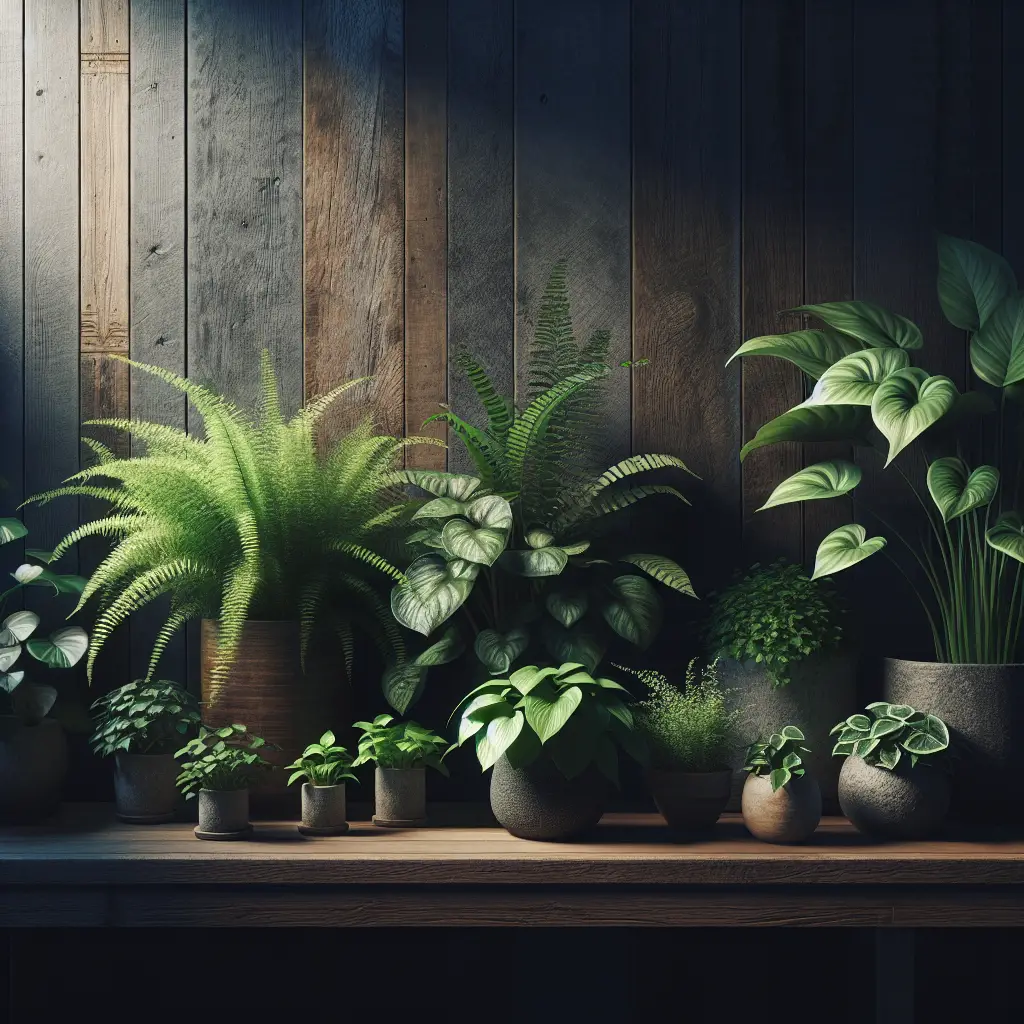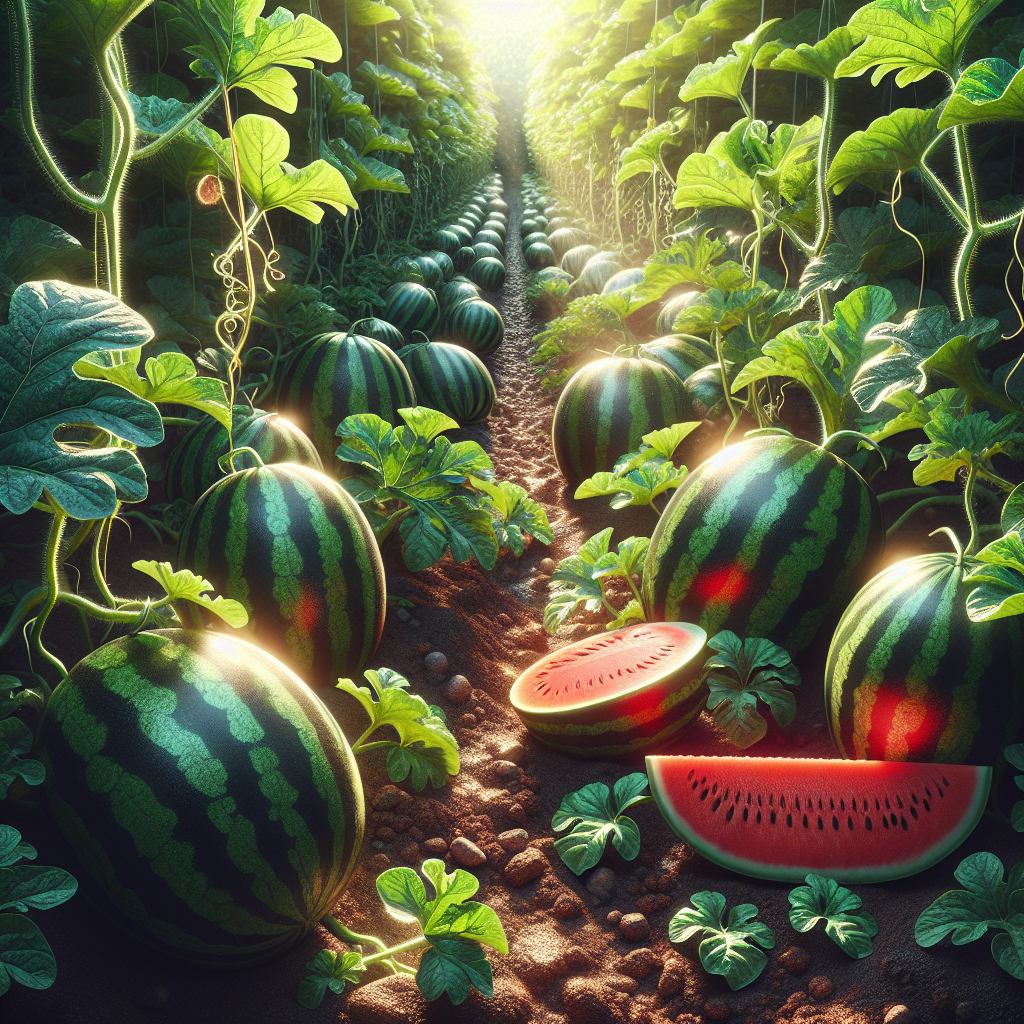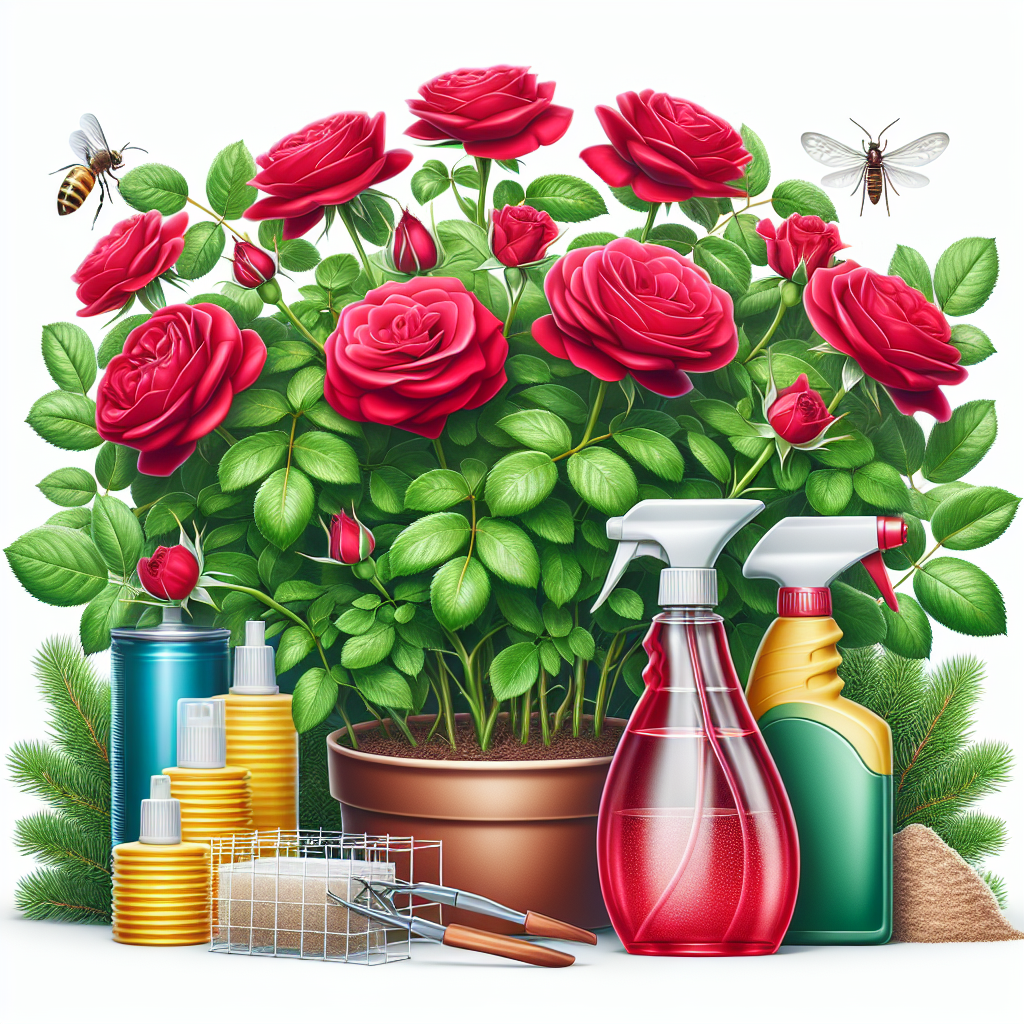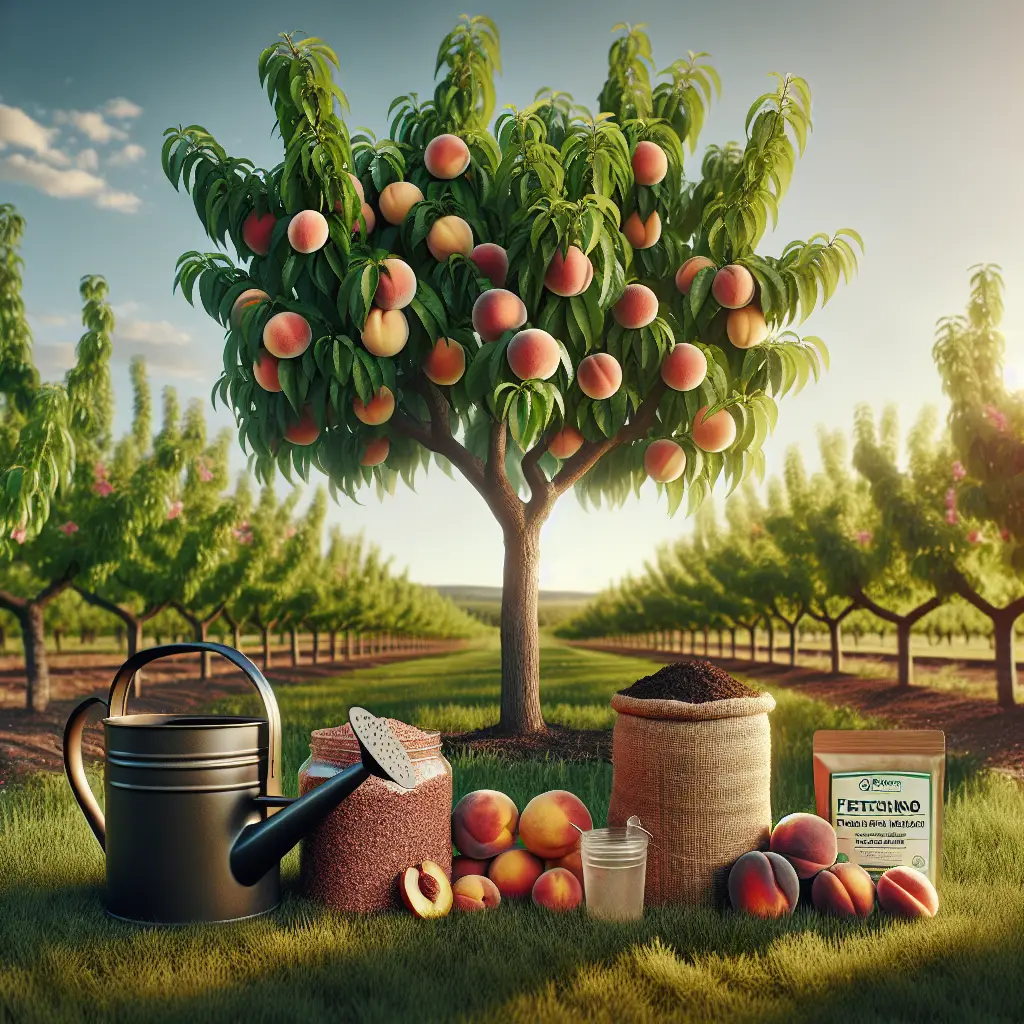Choosing Plants for Dark
Updated June 6, 2024 at 7:58 pm

Understanding Light Conditions for Indoor Plants
When choosing plants for darker areas in your home or office, it’s essential to understand light conditions and the various types of plants that can thrive with minimal light. Light is a crucial factor for plant growth, and it influences not only how well a plant grows but also its overall health and appearance. Let’s delve into the anatomy of low-light conditions and what this means for your leafy companions.
Best Plants for Low-Light Conditions
Finding the right plants for dark spaces can make all the difference in the energy and aesthetic of a room. Several plants are well-suited for these conditions, thriving even in the absence of direct sunlight. The following are some of the top candidates for such environments:
-
Zamioculcas zamiifolia (ZZ Plant)
Known for its resilience and ability to grow in low-light conditions, the ZZ Plant is a popular choice for spaces with limited light. It has glossy, dark green leaves that can add a lush, vibrant touch to any corner.
-
Sansevieria (Snake Plant)
Snake plants are another excellent choice for darker areas. They can tolerate both low light and irregular watering, making them very low-maintenance and perfect for beginners or those often away from home.
-
Aglaonema (Chinese Evergreen)
Chinese Evergreens are appreciated for their variegated leaves and tolerance to low-light conditions. They come in various colors and patterns, providing an exotic flair to your space.
-
Philodendron
These plants are incredibly adaptable and can survive in lower light settings. Their heart-shaped leaves provide a warm and inviting presence in any room.
-
Spathiphyllum (Peace Lily)
While the Peace Lily appreciates more light to bloom, it can certainly survive in darker conditions, purifying the air and offering elegance with its white, spoon-shaped flowers.
It’s important to remember that ‘low light’ does not mean ‘no light.’ All plants need some amount of natural light to perform photosynthesis, but these selections are more forgiving when light is not as abundant.
Pet-Friendly Plant Options
If you have pets, it’s crucial to ensure the plants you bring into your home are non-toxic to your furry friends. Here are some pet-friendly options for those less-lit areas:
-
Calathea (Prayer Plant)
The Calathea family offers a vast array of eye-catching patterns and colors, and is safe for pets. They are known for their ability to thrive in low-light environments.
-
Pilea peperomioides (Chinese Money Plant)
This trendy and pet-safe plant does well in indirect light and is known for its unique, round leaves. While it prefers bright, indirect light, it can adapt to less sunny spots.
-
Maranta (Prayer Plant)
Known for their distinctive leaf movements that mimic hands in prayer, Maranta are non-toxic to pets and can add movement and life to a darker room.
Always research before purchasing houseplants to ensure they are appropriate for your pet-friendly home. Avoid placing plants that could be harmful to pets within their reach, no matter how low-light tolerant they are.
Plant Care Overview
Before getting into the specific needs of each plant, here is a general overview of the aspects to consider for plant care in low-light conditions:
-
Pet Friendly
Choose plants that pose no threat if your pets happen to nibble on them, such as Boston ferns or spider plants.
-
Light Requirements
While these plants are low-light tolerant, they typically prefer indirect, bright light to maintain their health and appearance.
-
Watering
Overwatering can be a common issue in low-light conditions. Always check the soil moisture before watering and allow it to dry out slightly between waterings.
-
Humidity
Many low-light plants come from naturally humid environments. It’s beneficial to provide extra humidity through misting or a humidifier, especially during dry seasons.
-
Temperature
Maintain a consistent and comfortable temperature, avoiding cold drafts or direct heat sources that could damage the plants.
-
Difficulty
Generally, plants chosen for this guide are forgiving and easy to care for, but individual requirements may increase the difficulty level for some species.
Factors to Consider When Choosing Low-Light Plants
Before selecting plants for darker areas, it’s important to evaluate several variables that impact their well-being and growth. These include the plant’s mature size, growth rate, leaf density, and foliage color. Reflect on the space you have and the rate at which you wish to see your plants grow. Slower-growing species with denser leaves can often adapt better to lower light conditions.
Understanding Watering Needs for Low-Light Plants
In dimmer lighting conditions, plants photosynthesize less, meaning they require less water compared to their sun-loving counterparts. A common mistake is to over-water indoor plants situated in less illuminated spots. Ensure to water your plants based on the soil’s dryness level. Wait until the top inch of soil is dry to the touch before watering again. This method helps prevent root rot and maintains a healthy environment for the plants.
Importance of Soil Quality and Composition
Soil quality significantly affects plant health, especially in low-light indoor conditions. Opt for well-draining, loamy soils that retain moisture without becoming waterlogged. Incorporating perlite or vermiculite can enhance drainage and aeration. For the ZZ plant, a succulent mix works well, while the Snake Plant prefers a sandier soil to avoid soggy conditions. Meanwhile, provide a nutrient-rich mix for the lush Chinese Evergreen and Philodendron, which supports their variegated leaves and growth.
How to Repot and Refresh Your Low-Light Plants
Repotting is essential for the continued health and growth of your indoor plants. Typically, most plants will benefit from being repotted every two to three years. However, this varies based on growth speed and plant type. When repotting, select a container only one size larger than the current pot to avoid shocking the root system. Use fresh soil specific to the plant’s needs and gently tease the roots if they’re tightly bound.
Addressing Common Issues with Low-Light Indoor Plants
If you notice yellowing leaves, stunted growth, or drooping, it’s often a sign of inadequate light or over-watering. Brown leaf tips can indicate dry air or a need for more humidity. By adjusting care techniques such as watering schedules, humidity levels, and occasional pruning, you can help your plants adapt and thrive in low-light environments.
Harmonizing Your Décor with Low-Light Plants
Low-light plants don’t just offer cleaner air and a touch of nature; they also contribute significantly to your home decor. By selecting plants with different heights, leaf shapes, and colors, you can create a dynamic and cohesive look in your space. The ZZ Plant’s upright stance contrasts beautifully with the Snake Plant’s vertical leaves, while the Chinese Evergreen’s splashes of colorful foliage can brighten up a monochrome theme. Use stylish pots and plant stands to integrate your plants into your living area or workspace decor.
What Happens When Low-Light Plants Get Too Much Sun?
While they are tolerant of darker conditions, low-light plants can suffer from too much direct sun. Symptoms of too much sunlight include leaves that are bleached, wilting, or crispy to the touch. If you notice these signs, relocate your plant to a more shaded area, away from windows that receive direct sun exposure during peak hours.
When and How to Fertilize Your Low-Light Houseplants
Fertilization is an important aspect of plant care, providing necessary nutrients that might be depleted over time. However, low-light plants often need less frequent feeding than those in bright light. Use a balanced, water-soluble fertilizer diluted to half-strength, and apply it during the growing season—typically spring and summer. Refrain from fertilizing in the fall and winter when the plants enter their resting phase.
Creating the Perfect Environment for Your Low-Light Plants
Beyond just choosing the right plants, creating an environment that mimics their natural habitat is key to their survival and growth. Maintain humidity levels, ensure room temperatures are consistent, and avoid placing plants near heating or cooling vents. Consider using artificial grow lights, specifically designed for plants, as a supplemental light source if natural lighting is insufficient.
How to Introduce More Light to Your Plants Naturally
If your living space has little natural light, you can still optimize what’s available. Use reflective surfaces like mirrors to bounce light into dimmer areas, or select sheer curtains that allow more daylight to permeate the room while still diffusing direct sunlight. Placing plants in groups can also help them create a microclimate that retains humidity, which is essential for tropical low-light species.
The Psychological Benefits of Indoor Low-Light Plants
Indoor plants have been shown to offer numerous psychological benefits, including reduced stress levels, improved mood, and enhanced concentration. Choosing low-light plants not only improves the aesthetics of your home but also contributes to your wellbeing. The presence of plants like the calming Peace Lily or the vibrant Prayer Plant can transform your home into a peaceful sanctuary.
Expert Tips for Successful Low-Light Plant Care
For those who are new to the world of indoor gardening, here are a few expert tips to set you up for success:
- Assess Light Conditions Regularly: Monitor the natural light in your home throughout the year, as it can change with the seasons, and adjust plant placement accordingly.
- Be Patient: Plants acclimate slowly. Give them time to adjust to their new environment before making further changes.
- Maintain a Routine: Consistent care, from watering to pruning, helps plants flourish. Establish a routine that’s easy to follow for you and beneficial for your plants.
- Observe Your Plants: Each plant communicates its needs differently. Regularly inspecting your plants for signs of distress or happiness can guide your care practices.
Engaging with a Community of Plant Lovers
Engaging with an online community or local gardening club can be invaluable for growing your knowledge and troubleshooting any issues. Sharing experiences or seeking advice from these communities can enrich your indoor gardening journey. Social media platforms, forums, and local meet-ups are great places to start connecting with fellow plant enthusiasts.
Where to Buy Low-Light Plants and Supplies
Ready to start or expand your low-light plant collection? Local nurseries, garden centers, and online plant shops offer a variety of options and supplies. Check reviews and ask for recommendations to ensure you are getting quality plants. When purchasing online, understand the shipping process to ensure your new plant friends arrive safely.
Taking the Next Step in Your Plant Journey
Once you have equipped yourself with the necessary knowledge and started your collection of low-light tolerant plants, continue to explore and learn. Every plant has a unique story, and as you become more experienced, you’ll find joy in nurturing each one. Remember to always choose plants that will thrive in your specific environment and cater to your lifestyle. Happy planting!
Enhancing Health and Wellness with Low-Light Plants
Beyond the aesthetic appeal and decorative potential, adding low-light plants to your living or working space can play a significant role in enhancing the air quality and promoting a healthier environment. Plants like the Sansevieria and the Peace Lily are not only tolerant of shadier corners but are also known for their air-purifying abilities. Studies indicate that indoor plants can remove toxins such as formaldehyde, benzene, and trichloroethylene from the air, contributing to the overall well-being of the inhabitants.
Finding the Perfect Low-Light Plant for Your Personal Style
With the wide variety of plants that can tolerate low-light conditions, you can select species that perfectly match your personal style and preferences. Whether you lean towards the architectural lines of a Snake Plant or the plush and tropical look of a Philodendron, there is a low-light plant for every taste. By choosing the right plant for your space, you can ensure that it not only survives but thrives, adding a touch of nature’s beauty to your personal haven.
Maximizing Growth: Tips for Low-Light Plants
While low-light plants are known for their adaptability, there are certain tips and tricks to maximize their growth and ensure they stay healthy and attractive. Regular dusting of leaves, for example, can enhance a plant’s ability to absorb the available light. Additionally, rotating your plants periodically ensures that all sides receive adequate light and grow evenly. By tending to these simple yet effective details, you can make the most out of the low-light conditions.
Propagating Low-Light Plants for a Green Home
Propagating your low-light plants is an economical and rewarding way to expand your collection. Many of the plants mentioned, such as the ZZ Plant and the Philodendron, can be easily multiplied by rooting cuttings in water or soil. This not only saves money but also allows you to share your plant passion with friends and family. Keep in mind that propagation does have its intricacies, so do your research on the specific needs of each plant species before you begin.
Overcoming Challenges with Troubleshooting Expertise
Even with the most resilient of plants, challenges can arise. Whether it’s dealing with pests like gnats and spider mites or troubleshooting a wilting plant, having some expertise in plant care can help you overcome these hurdles. For example, if you notice the leaves of your Snake Plant are becoming mushy, this could indicate overwatering—a common issue for many plant enthusiasts. Knowing how to properly diagnose and address these issues is key to maintaining a thriving plant collection.
Diving Deeper into the World of Low-Light Plants
Once you have a handle on the basics, you may find yourself wanting to delve deeper into the world of low-light plants. There are many resources available for those looking to expand their knowledge, including books, plant care workshops, and botanical gardens. By cultivating your understanding of plant care, you can expand your indoor garden to include more unique and less common species that can bring a new level of intrigue to your space.
Nurturing Your Personal Growth Alongside Your Plants
It’s no secret that caring for plants can be therapeutic and rewarding. As you watch your low-light plants grow and adapt to their environment, you may find parallels in your own life. The patience and consistent care required for plant nurturing can teach valuable life lessons. The growth of your plants can become a mirror to your personal development, making the journey of indoor gardening a fulfilling endeavor.
Celebrating Your Success with Low-Light Plants
As you implement these tips and watch your low-light plants flourish, take a moment to celebrate your success in indoor gardening. Remember that every new leaf and flower is a testament to your care and attention. The lush environment you’ve created serves not just as a living space, but as a personal accomplishment in your plant care journey. So enjoy the verdant splendor of your green companions and the sanctuary they provide in your home or office.
Final Thoughts on Choosing Plants for Dark Spaces
Creating a thriving garden in low-light conditions might seem daunting, but with careful selection and proper care, it is entirely possible. Go for plants that suit your lifestyle and aesthetic preferences, and don’t be afraid to start with the hardy varieties like ZZ Plants and Snake Plants. Remember to keep an eye on the specific needs of each plant, and don’t hesitate to seek help from more experienced gardeners or online communities. With time and patience, you’ll have a lush indoor oasis that brings life to even the darkest corners of your home.
Shop more on Amazon

